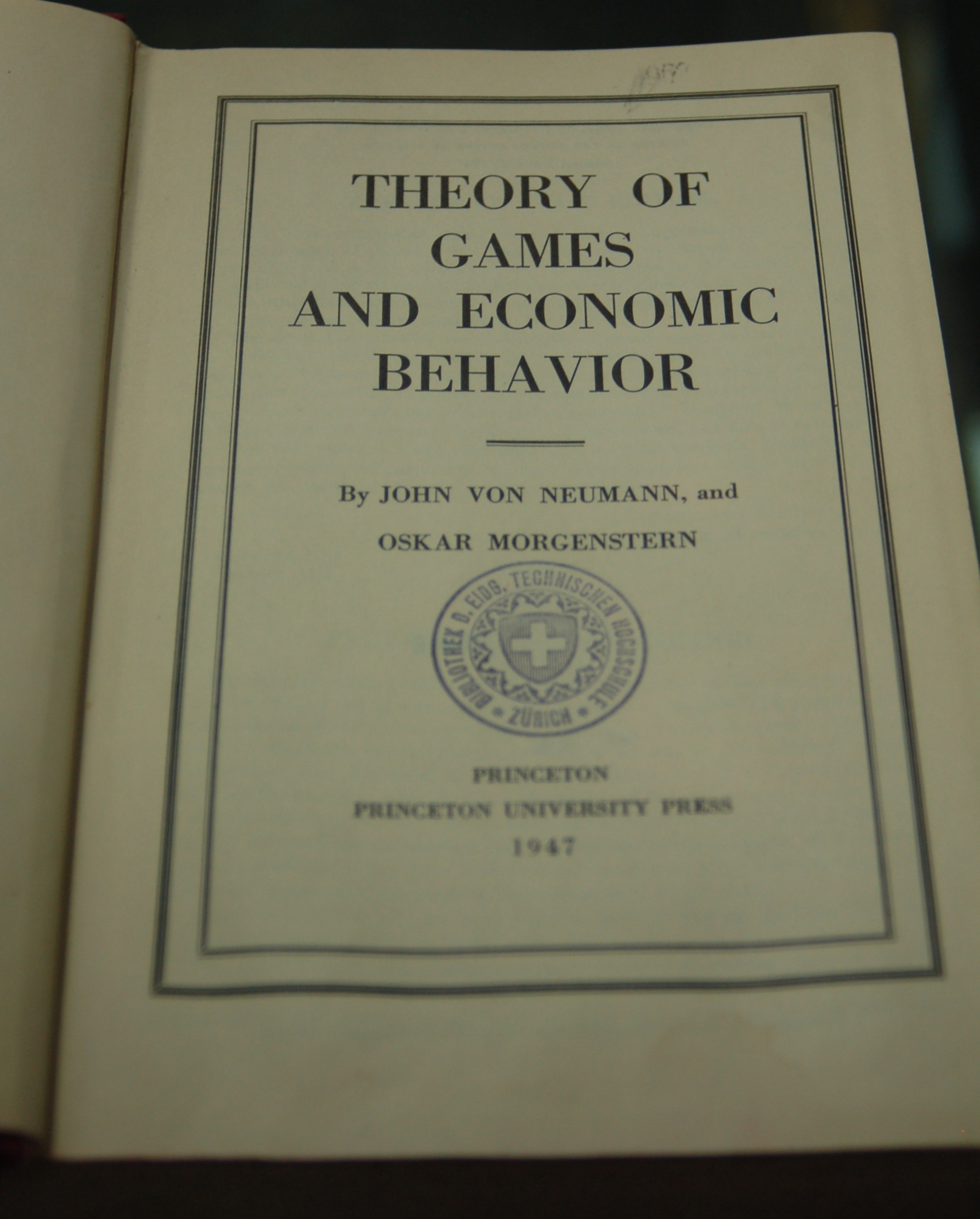
John von Neumann’s accomplishments may best be summed up as impressive. Von Neumann was a Hungarian-American mathematician and polymath, who is now widely regarded as one of the most influential mathematicians of the twentieth century. In celebration of his birthday, let’s review his impact and legacy.
An Early Aptitude for Mathematics
Born on December 28, 1903, in Budapest, Hungary, von Neumann displayed remarkable mathematical abilities at a young age. By age six he could divide two eight-digit numbers in his head, and by age eight he was familiar with differential and integral calculus. At the age of 15, he began studying advanced calculus under renowned Hungarian-American mathematician Gábor Szegő. Just four years later, at the age of 19, he published two significant mathematical papers. Von Neumann went on to graduate from ETH Zürich as a chemical engineer while simultaneously completing his PhD in mathematics.

A picture of John von Neumann from his time at the Los Alamos National Laboratory. Image by LANL. Unless otherwise indicated, this information has been authored by an employee or employees of the Los Alamos National Security, LLC (LANS), operator of the Los Alamos National Laboratory under Contract No. DE-AC52-06NA25396 with the U.S. Department of Energy. The U.S. Government has rights to use, reproduce, and distribute this information. The public may copy and use this information without charge, provided that this Notice and any statement of authorship are reproduced on all copies. Neither the Government nor LANS makes any warranty, express or implied, or assumes any liability or responsibility for the use of this information.
Von Neumann then attended the University of Göttingen in Germany on a grant from the Rockefeller Foundation to study mathematics under David Hilbert, one of the most influential mathematicians at the time. After graduating and giving lectures at a few universities, he secured a tenured professorship at the Institute for Advanced Study in New Jersey in 1933.
Redefining Mathematics with Game Theory
During his career, von Neumann studied strategy games and worked in statistical mathematics. In 1928, he proved his minimax theorem, which established that in zero-sum games with perfect information, there exists a set of strategies for both players that enables them to minimize their maximum losses. Years after initially formulating the theorem, he improved and extended it to include games with imperfect information and published this advancement in the book Theory of Games and Economic Behavior, authored alongside Oskar Morgenstern. This book stands as the foundational work for game theory.

A copy of the Theory of Games and Economic Behavior, authored by John von Neumann and Oskar Morgenstern. This image is licensed under the Creative Commons Attribution 2.0 Generic license, via Wikimedia Commons.
In 1932, von Neumann published a series of papers that proved to be foundational contributions to ergodic theory, a branch of mathematics that focuses on the statistical properties of deterministic dynamical systems. From 1935 to 1937, he focused on lattice theory, which deals with partially ordered sets in which every two elements have a greatest lower bound and a least upper bound. His work merged traditional projective geometry with modern algebra and paved the way for progress in the field of projective geometry.
Throughout his career, he made many other noteworthy contributions to mathematics, advancing the theory of duality in linear programming, the study of rings of operators, and lifting theory.
Building the Foundation of Physics and Computer Science
Outside mathematics, von Neumann left one of his largest marks on the field of quantum mechanics. Along with English theoretical physicist Paul Dirac, von Neumann helped establish the Dirac–von Neumann axioms, a rigorous mathematical framework for quantum mechanics. In this work, he presented a mathematical formulation of quantum mechanics using operators on a Hilbert space, which he detailed in his book Foundations of Quantum Mechanics.
Von Neumann is also considered a founding figure in the field of computing. In 1945, he shared a design architecture, now known as the von Neumann architecture, for an electronic digital computer with the following components:
- A control unit with an instruction register and program counter
- A processing unit with an arithmetic logic unit and processor registers
- External mass storage
- Memory to store both data and instructions
- Input and output mechanisms
His work led to significant advancements in computing hardware design, theoretical computer science, and the field of scientific computing.
Discussions of the Electronic Discrete Variable Automatic Computer (EDVAC), a stored-program computer, led von Neumann to write the First Draft of a Report on the EDVAC, which caught the attention of the field. It should be noted, though, that other minds such as Alan Turing, J. Presper Eckert, and John Mauchly laid the foundation for von Neumann’s paper.
Further Reading
Throughout his life, Neumann worked in multiple disciplines and earned a spot among the greatest mathematicians in history for his notable contributions to various fields and theories.
- Learn more about John von Neumann’s life and work here:
- Looking to learn more about similar scientists? Check out more featured scientists blog posts here:
- Niels Bohr, a scientist responsible for the Bohr model of the atom and the liquid droplet theory
- Egon Orowan, a physicist and metallurgist and fellow member of a group called “The Martians”, a colloquial term for certain scientists from Hungary




Comments (0)